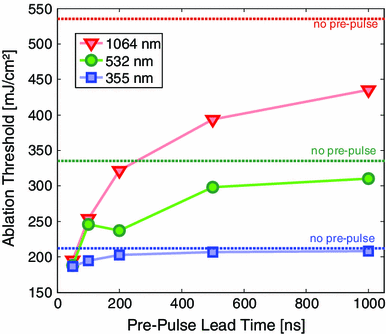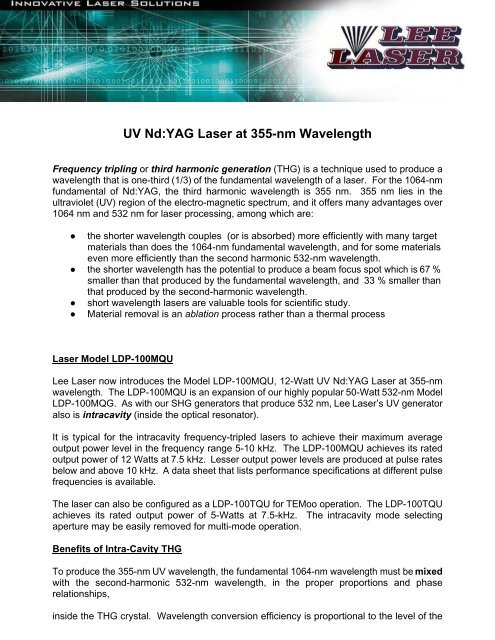Previous studies have demonstrated that q switched 355 nm laser pulses can be used to remove composite sealants and restorations from tooth surfaces without significant damage to sound tooth surfaces and have also shown that 355 nm lasers pulses can also be used to selectively etch the interprismatic protein of enamel to increase the effectiveness of topical fluoride for inhibiting decay and.
355 nm laser ablation.
A small beam defect was observed which can affect the machining performance at higher pulse energies.
Laser ablation of nickel gold and copper thin film on glass substrates has been investigated using a nanosecond pulsed nd yag laser operating at 355 nm in air with a gaussian intensity profile.
355 nm nanosecond laser removes pol materials by laser ablation.
The ablation thresholds of the films were calculated from the crater diameter values.
Abstract ablation results of polyimide pi by a single pulse of an acoustic optical q switched nd yag laser at 355 nm are reported for the first time and are compared with the results for rcc resin coated copper trade mark of allied signal and pi at other wavelengths.
Evident melting occurs in the process of 355 nm laser ablation of pi and indicates that a photothermal mechanism has contributed to the ablation process.
Compared with the absorption coefficient of pi at 248 nm the absorption coefficient at 355 nm is smaller by about an order of magnitude.
When pulse repetition rate is 190 khz cutting speed is 40 mm s and cutting time is 4 haz width is narrowest which is 12 07 0 4 μm.
Thermal diffusion causes pol to melt and form haz after coagulation.
It is shown that the advantage of a small thermal effect occurring in the acoustic optical q switched laser ablation is offset significantly because of the smaller absorption coefficient.
Objective proof of concept for using a solid state pulsed laser at 355 nm.
Selective tissue ablation using laser radiation at 355 nm in lead extraction by a hybrid catheter.
The exact beam profile was measured through mechanical scanning with a photodiode.


























